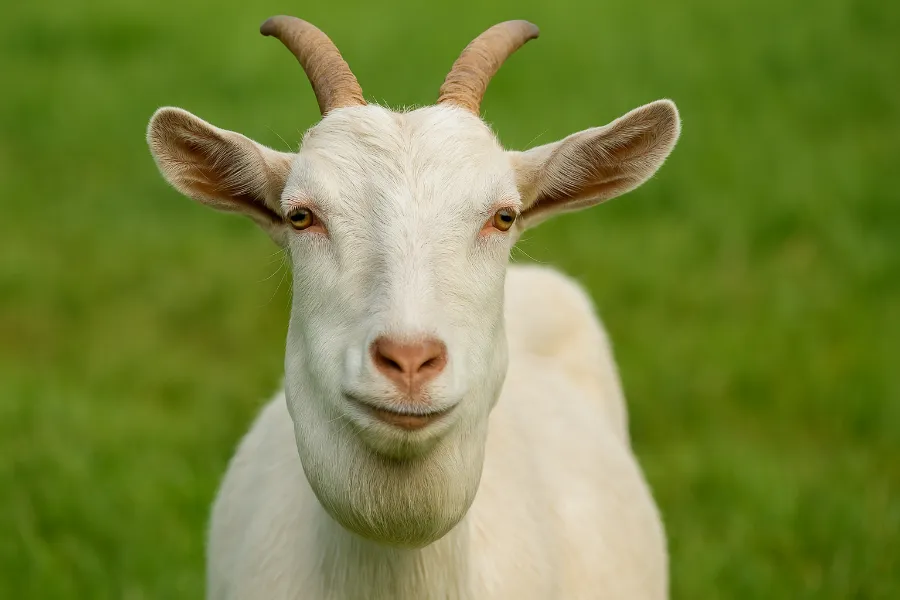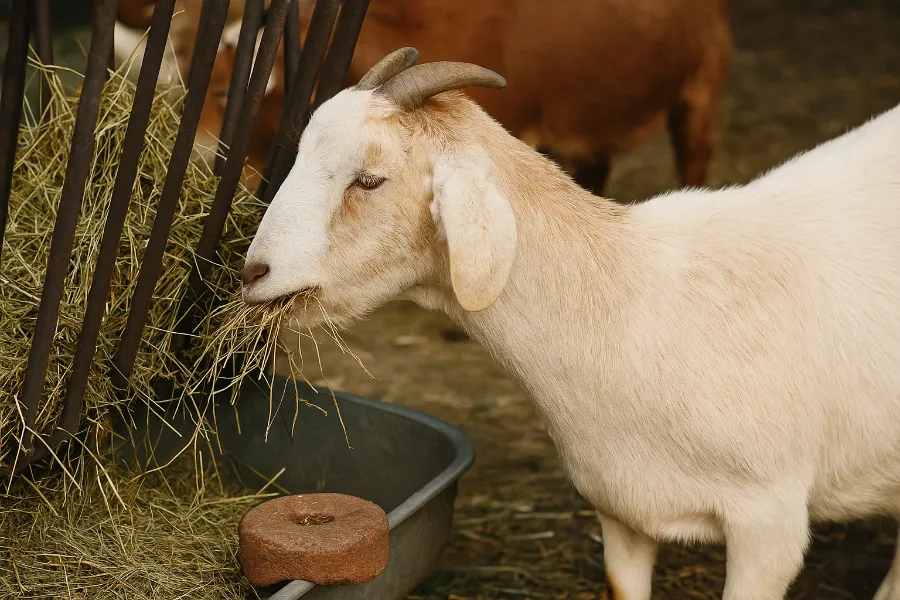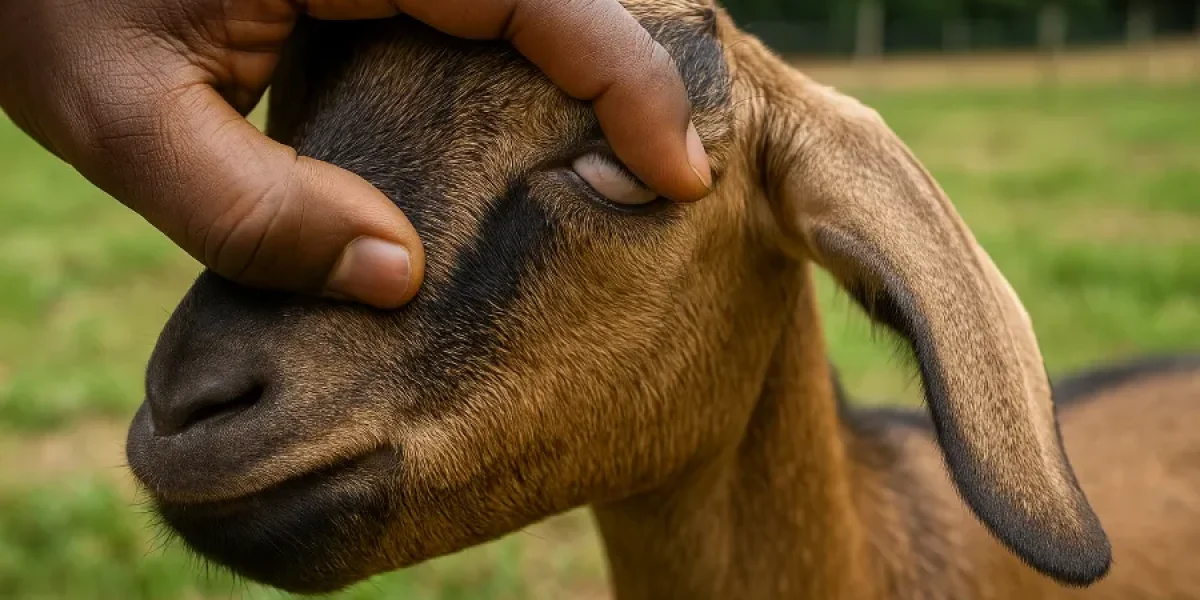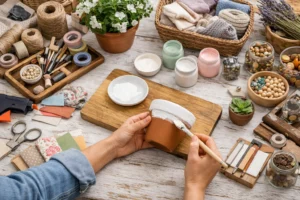If you’ve ever walked out to the pasture and noticed a goat with a puffy chin that looks like she’s hiding a water balloon under her jaw, chances are you’re looking at goats bottle jaw. The first time I saw it, I panicked. That soft swelling looked harmless at first—but within days, I learned how serious it could be.
Over the years of raising dairy and meat goats, I’ve dealt with bottle jaw a few times, and each experience taught me something new about parasites, nutrition, and goat care. Today, I want to share everything I’ve learned about what causes it, how to treat it, and—most importantly—how to prevent it from coming back.

Bottle Jaw: What It Really Means
Bottle jaw isn’t a disease—it’s a symptom. That soft, fluid-filled swelling under the jaw forms because fluid leaks from blood vessels into the tissue. The root cause is loss of protein from the bloodstream, most often triggered by internal parasites.
When your goat loses protein, the blood can’t hold onto fluid properly. The fluid seeps into soft tissue, and gravity pulls it downward—right under the jawline. It’s not painful, but it’s a major red flag.
If your goat’s chin looks puffier in the morning and seems to shrink by evening, don’t wait and hope it passes. That pattern—puffiness that fluctuates—is the classic signature of bottle jaw. By the time you see it, the goat’s been battling worms or protein loss for quite some time.
Goat Parasites: The Hidden Enemy Behind Bottle Jaw
The most common cause of goats bottle jaw is internal parasites. Goats are incredibly vulnerable to parasites, especially in warm or damp climates. The biggest troublemaker of all is the barber pole worm (Haemonchus contortus)—a blood-sucking parasite that lives in the goat’s stomach and literally drains their strength from the inside out.
Here’s how it happens:
- Worm eggs pass through the goat’s manure.
- The eggs hatch and develop into larvae on the ground.
- Those larvae climb up blades of grass, waiting to be eaten.
- Goats ingest them while grazing.
- Once inside, the larvae mature and begin feeding on blood.
Each worm can consume enough blood to cause serious anemia. Multiply that by hundreds or thousands, and your goat’s red blood cell count and protein levels drop fast. That’s when the swelling under the jaw appears.
Wet ground, short pastures, and overstocking all accelerate the problem. Once your herd’s pasture becomes contaminated, reinfection happens fast—unless you manage grazing carefully.
Goat Deworming: The Right Way to Treat Parasite Overload
When I first started raising goats, I used to deworm them on a schedule—spring, summer, fall—like clockwork. It felt proactive, but I soon learned that routine deworming without testing creates parasite resistance. Eventually, the same dewormers stopped working altogether.
Now, I follow a targeted deworming program, which treats only the goats that truly need it, based on evidence instead of habit.
How I Deworm Smarter:
1. Check FAMACHA scores regularly.
Lift the lower eyelid and compare the color to a FAMACHA chart. Bright red means healthy; pale pink or white signals anemia and parasite trouble.
2. Run a fecal egg count.
If you can, work with your vet or a local lab to test manure samples. It confirms what species of worms you’re fighting and whether treatment worked.
3. Choose the right dewormer class.
There are three main types:
- Benzimidazoles (e.g., Safeguard, Valbazen)
- Imidazothiazoles (e.g., Prohibit)
- Macrocyclic lactones (e.g., Ivomec, Cydectin)
Using the wrong one, or repeating the same class too often, speeds up resistance. Your vet can help identify which is still effective in your area.
4. Dose accurately.
Underdosing is one of the biggest mistakes goat owners make. Always weigh your goat or use a girth tape before giving medication.
5. Follow up.
After 10 to 14 days, run another fecal test. You want to see at least a 90% drop in worm eggs; otherwise, your dewormer didn’t work and you’ll need to try a different one.
Goat Electrolyte: Rehydration and Recovery Support

Once parasites are under control, your goat’s body still needs time to recover. Dehydration and weakness often follow a heavy worm burden, and that’s where a goat electrolyte can make a big difference.
I always keep powdered livestock electrolytes on hand, but when I’m out—or if I want something natural—I make my own.
My Homemade Goat Electrolyte Recipe (1 Liter)
- ½ teaspoon table salt
- ¼ teaspoon Lite Salt (for potassium)
- ½ teaspoon baking soda (to help buffer acidity)
- 2 tablespoons molasses or honey
- 1 liter warm water
Mix everything thoroughly until dissolved. Offer it in a clean bucket beside plain water.
This simple mix helps restore sodium, potassium, and bicarbonate levels—essential for circulation, hydration, and recovery. When my goats are especially weak, I’ll use a syringe to drench small amounts at a time.
If you prefer organic or natural alternatives, coconut water mixed with salt and honey works surprisingly well too.
Goat Care: My Step-by-Step Recovery Routine
Treating goats bottle jaw isn’t just about killing parasites—it’s about rebuilding your goat’s strength and helping the body restore balance. Here’s the routine I use when I have a goat showing that telltale swelling.
Step 1: Rest and isolation
Move the goat to a quiet pen with shade, hay, and clean water. Keeping her separate for a few days helps you monitor intake and recovery without competition from herd mates.
Step 2: Feed for protein
Protein loss is what causes the swelling in the first place. To restore it:
- Offer alfalfa hay or pellets (high in protein and calcium)
- Add soybean meal or black oil sunflower seeds for an extra boost
- Make sure your goat has constant access to fresh forage
Step 3: Support red blood cell regeneration
B-complex or B-12 vitamins help restore appetite and encourage red blood cell production. Ask your vet about the right dosage.
Step 4: Keep minerals and water available
Dehydration slows everything down. I keep clean water buckets filled at all times and a loose mineral feeder nearby.
Step 5: Monitor progress daily
Check eyelids every day. You should start to see more pink and less puffiness within several days. If there’s no improvement, you may be dealing with a resistant parasite or secondary condition.
Goat Diseases That Mimic Bottle Jaw
Sometimes a goat’s jaw swells for reasons other than parasites. Knowing what else to look for helps avoid wasted time or the wrong treatment.
1. Liver flukes – Another parasite, but one that affects the liver instead of the stomach. Common in very wet regions.
2. Johne’s disease – Causes chronic weight loss and diarrhea.
3. Mineral imbalances – Deficiencies in copper or selenium can lead to swelling or weakness.
4. Heart failure – Rare, but can cause generalized fluid buildup, including under the jaw.
If your goat doesn’t improve after proper deworming and nutritional support, a vet visit and diagnostic workup are necessary.
Barber Pole Worm: The Main Villain Behind Bottle Jaw
The barber pole worm gets its name from its red-and-white spiral body—the red part is blood, the white part is its gut. It’s the single most dangerous internal parasite for goats because of how much blood it consumes.
Here’s how I manage it on my farm:
Rotate Pastures
Never let goats graze grass shorter than 4 inches. That’s where most larvae live. Move them before the pasture gets that low.
Rest Grazing Areas
Give each pasture at least 45–60 days to rest. Sunlight and time kill most larvae before goats return.
Avoid Overstocking
Too many goats on a small space leads to quick pasture contamination. Give your herd enough space to spread out.
Elevate Feeders and Water Buckets
Keep feed and water off the ground. Worm eggs in manure can easily spread into feed that’s too close to soil level.
Try Mixed Grazing
Cattle, sheep, and goats don’t share all the same parasites. Rotating species or letting chickens scratch through pastures helps break the worm life cycle naturally.
Use Copper Oxide Wire Particles
Under a vet’s guidance, COWP boluses can help reduce barber pole worm populations. But use them carefully—too much copper can be toxic.
Goat Mineral Supplement: Building Long-Term Resistance
Good mineral nutrition is the unsung hero of parasite prevention. A healthy, mineral-balanced goat resists infection better and recovers faster if it does get sick.
What I Look for in a Goat Mineral Supplement
- Loose minerals (not blocks—goats don’t lick hard enough to get what they need)
- High levels of copper, selenium, and zinc
- Vitamins A, D, and E for immune support
- A formula specifically made for goats, not sheep
I offer minerals year-round in covered feeders so they stay dry. When goats have constant access, they naturally regulate their intake and maintain better immunity.
My 7-Day Goats Bottle Jaw Recovery Checklist
Day 1:
Check FAMACHA score, run a fecal test, deworm under vet guidance, and start electrolytes.
Day 2–3:
Feed high-protein hay, provide minerals and water, and continue electrolytes if appetite is low.
Day 4–5:
Swelling should begin to go down. Consider B-12 or iron support if still anemic.
Day 6–7:
Recheck eyelid color and energy levels. Schedule a fecal retest after 10–14 days to confirm success.
Goat Care Tips to Prevent Bottle Jaw Year-Round
- Rotate pastures frequently to limit reinfection.
- Deworm selectively, not routinely.
- Run fecal tests every few months to monitor parasite load.
- Keep feed off the ground to reduce contamination.
- Use proper nutrition—protein and minerals are essential.
- Quarantine new goats for 10–14 days before adding to the herd.
- Monitor eyelids weekly during peak parasite season.
Consistent management is far more effective than emergency treatments. Once you’ve seen bottle jaw, you’ll never forget it—and you’ll do everything possible to keep it from happening again.

Final Thoughts on Goats Bottle Jaw
The first time I faced goats bottle jaw, I thought I was about to lose one of my best does. What I didn’t realize then is that the condition wasn’t the real problem—it was the warning sign. It told me my pasture, feed, and deworming plan needed attention.
Now, when I see healthy pink eyelids, full bellies, and bright eyes in my herd, I know that my prevention strategy is working.
Bottle jaw is scary the first time, but it’s also an incredible teacher. It shows how connected every part of goat care is: pasture rotation, nutrition, mineral balance, and parasite management all play a role. Stay observant, stay consistent, and your herd will thrive far beyond one swollen chin.
FAQs
Goats bottle jaw is caused by internal parasites, especially the barber pole worm. These worms damage the stomach lining, leading to protein loss and fluid buildup under the jaw.
Treatment includes targeted deworming, electrolyte support, and high-protein feed to restore blood proteins. Work with a vet to choose the right dewormer and dosage.
No, it requires treatment. Without addressing parasites and protein loss, the swelling will worsen, and the goat’s health can quickly decline.
Early signs include pale eyelids, weakness, weight loss, and reduced appetite. The swelling under the jaw usually appears after anemia develops.
Prevention starts with pasture rotation, regular fecal testing, and selective deworming. Providing minerals and clean water also helps build natural resistance.
The condition itself isn’t contagious, but the parasites causing it can spread through manure and grazing. Good pasture management reduces the risk for the entire herd.
Offer high-protein foods like alfalfa hay, goat pellets, or soybean meal. Keep electrolytes and loose minerals available to support hydration and recovery.













